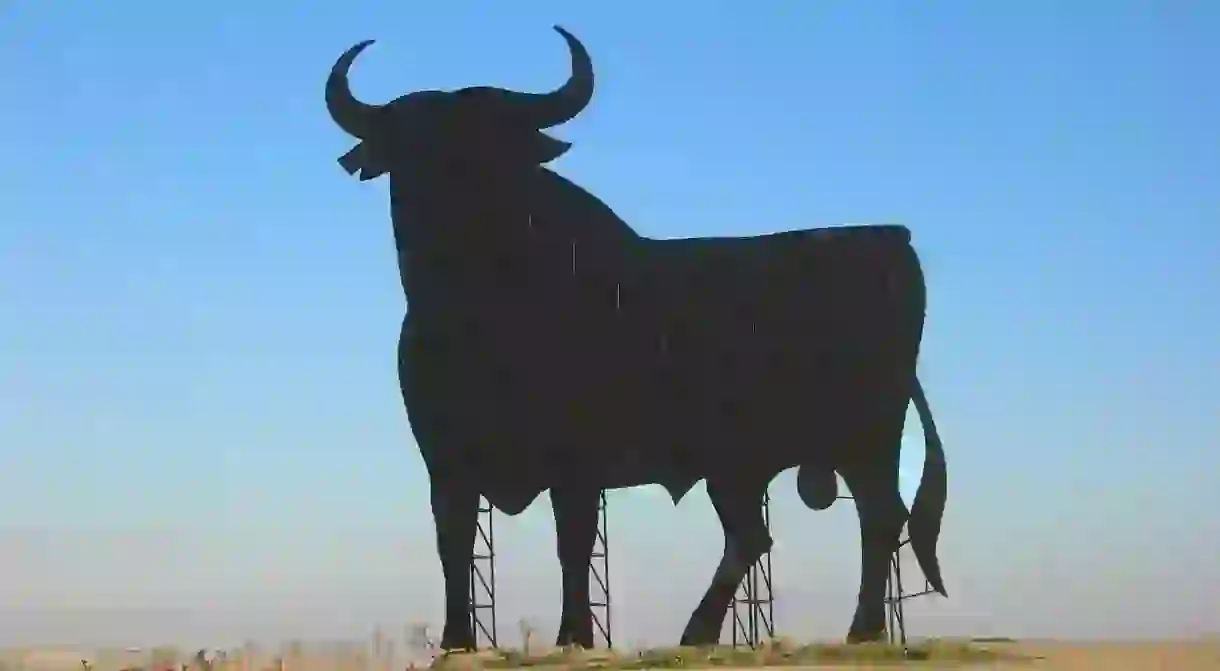A Spanish Icon: The Untold Story of Spain's Osborne Bulls

You might have noticed the black silhouetted bulls alongside Spain’s motorways, but what’s the story behind this Spanish icon? We bring you everything you need to know about the country’s Osborne bulls, from their origin and meaning, and why they mean so much to the people of Spain.
Background
In among the petrol stations and roadside cafés dotted along Spain’s motorways, is a much more memorable sight: huge, black bull silhouettes, horns jutting and cojones dangling visibly.
The former brandy advertisements have, over the years, become an enduring Spanish icon, their outline recreated on T-shirts, posters and many other souvenirs as a quintessential symbol of Spain.
But how did a simple advert capture the Spanish consciousness so strongly?

History
The bulls were born in 1956 as a straightforward advertisement by Osborne Sherry for their ‘Veteran Brandy’. The bull design was the brainchild of artist, Manolo Prieto and constructed in the workshop of brothers José and Féliz Tejada Prieto.
The bulls, standing 14 metres (46 feet) high and weighing 4,000kg (8,819 lbs) were originally made out of wood, but were changed to metal in the 1960s to better withstand weather conditions.
They were painted black with the brand Veteran Brandy written across the bull in red.
http://instagram.com/p/BWSqobNj2dH/?tagged=osbornebull
Publicity in peril
In 1994, Spain’s roads department started a crackdown of roadside advertising, putting the Osborne bulls in jeopardy. The Spanish government planned to tear them down, but a public outcry ensued and a ‘save the bulls’ campaign launched.
The bulls had become such an entrenched part of Spanish culture, the government eventually agreed to keep them, but all advertising was blacked out.
The bulls today
Today, from the over 500 original Osborne bulls, 91 remain. The largest proportion (23 in total) is located in Andalusia, while Castilla y León has 14 and Valencia, 11.
The bulls’ strong links with Spain have made them a target for Catalan and Basque nationalists, and several incidences of vandalism against the bulls have been recorded in Catalonia and the Basque Country.

A national icon
In 2005, the image of the bull was declared national property by a Spanish judge, after the Osborne Group brought a case against five companies using the bull image on various souvenirs, from T-shirts to ashtrays.
The judge said the bull “has been converted into a national symbol that can be used without the company’s permission and is artistic heritage that belongs to the Spanish people, integrated into the countryside”.
The Osborne Group said “If Spaniards can claim Osborne’s bull, why can’t American’s claim Coca Cola’s logo as national property?”
Today, the Osborne bull is widely considered an icon of 21st century design, its image having come from small beginnings, to symbolise an entire nation.













